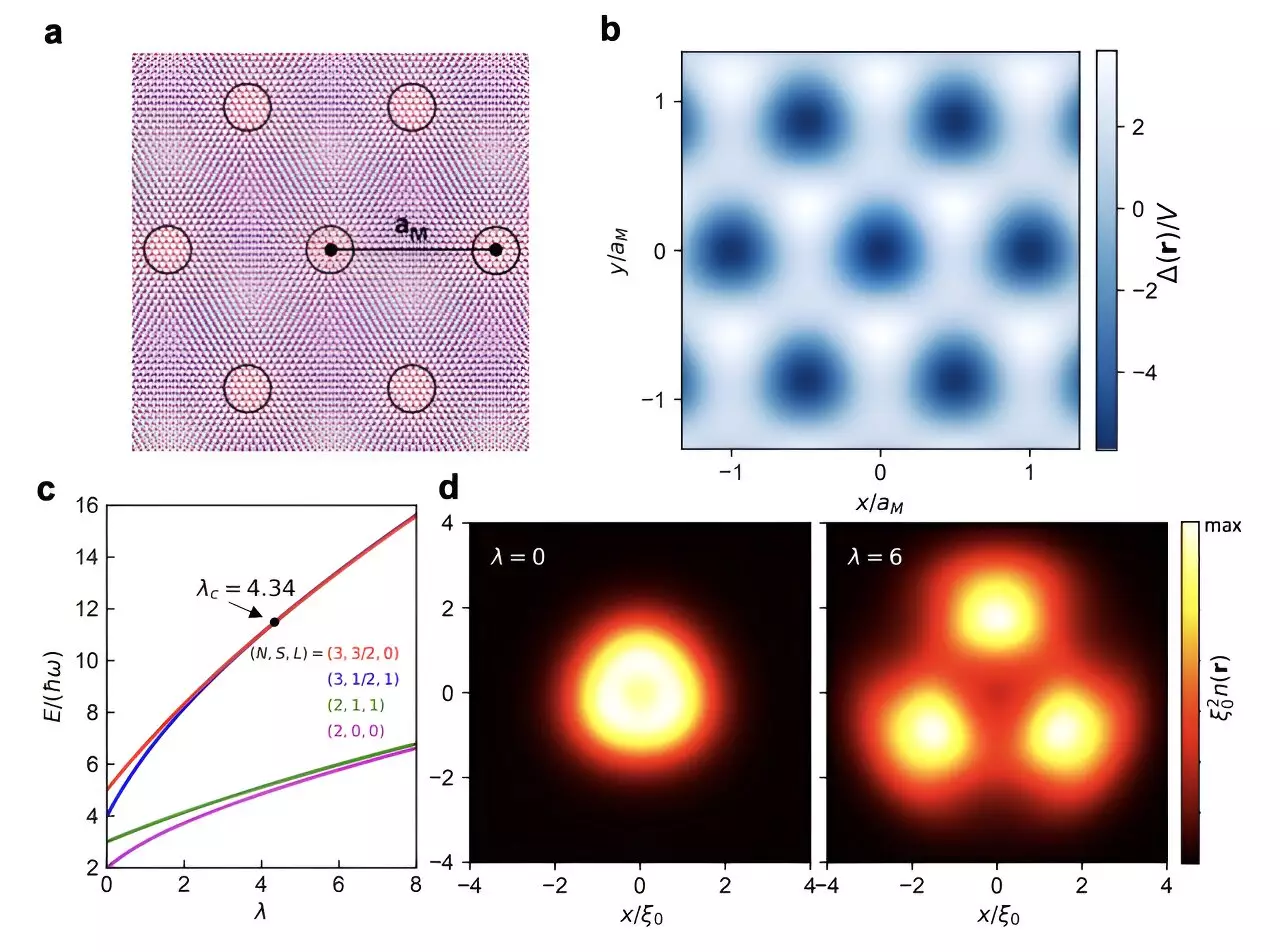Semiconductor moiré superlattices have proven to be intriguing material structures for the study of correlated electron states and quantum physics phenomena. A recent study conducted by researchers at Massachusetts Institute of Technology (MIT) delves deeper into the underlying physics of these structures and proposes a new theoretical framework. This article aims to analyze the study and highlight the key findings.
One of the primary advantages of semiconducting moiré superlattices is their ease of manipulation in experimental settings. Physicists can readily control the density of electrons within these structures, thereby altering the properties of their many-electron ground state. Most previous studies have focused on the case of one or less than one electron per moiré unit cell. However, the researchers from MIT decided to explore the multi-electron regime to uncover any novel insights.
Challenges in Studying Multi-Electron Materials
Predicting the behavior of multi-electron materials presents significant challenges due to the presence of various competing energy scales. Kinetic energy favors an electron liquid, while interaction and potential energy favor electron solid. However, in moiré materials, the strength of different energy scales can be tuned by varying the moiré period, offering a unique opportunity for investigation. To address this challenge, the MIT researchers developed a theoretical framework focusing on the behavior of individual atoms in the moiré superlattice.
The theoretical framework devised by Reddy, Fu, and Devakul aims to study large-period moiré systems where electrons residing on different potential wells are weakly coupled. Surprisingly, even this relatively simple approach yielded insights into various interesting quantum physics phenomena. The researchers discovered that at a filling factor of n=3, Coulomb interactions led to the formation of a “Wigner molecule” within the superlattice. Moreover, for Wigner molecules whose size is comparable to the moiré period, they observed the emergence of a unique structure called an “emergent Kagome lattice.”
The self-organized electron configurations uncovered in the study offer exciting avenues for further exploration and experimentation. These configurations could serve as inspiration for other physicists seeking to investigate charge order and quantum magnetism in unconventional materials. Notably, the researchers’ prediction of the Wigner solid has already been confirmed experimentally, highlighting the significance of their work. In the future, the MIT team plans to focus on studying the quantum phase transition between Wigner electron solids and electron liquids.
The recent study conducted by MIT researchers sheds light on the fascinating world of semiconductor moiré superlattices. The newfound understanding of large-period moiré systems and the emergence of Wigner molecules and emergent Kagome lattices provide valuable insights into multi-electron behavior and potentially open doors to further advancements in the field of quantum physics. With ongoing research and experimentation, the study’s findings have the potential to revolutionize the study of correlated electron states and pave the way for exciting new discoveries in the future.


Leave a Reply